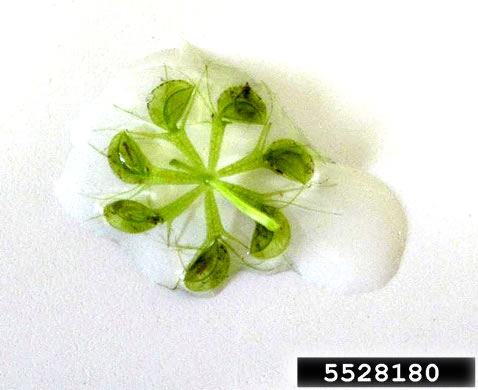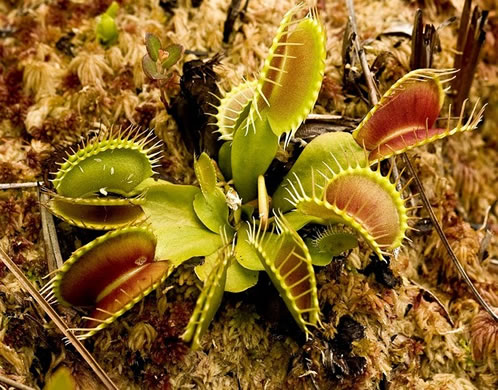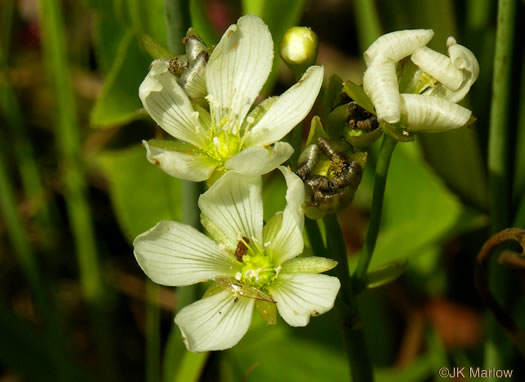Hovering over an image will enlarge it and point out features (works better on desktop than on mobile).
![]() A camera indicates there are pictures.
A camera indicates there are pictures.
![]() A speaker indicates that a botanical name is pronounced.
A speaker indicates that a botanical name is pronounced.
![]() A plus sign after a Latin name indicates that the species is further divided into varieties or subspecies.
A plus sign after a Latin name indicates that the species is further divided into varieties or subspecies.
Most habitat and range descriptions were obtained from Weakley's Flora.
Your search found 2 taxa in the family Dionaeaceae, Flytrap family, as understood by Vascular Flora of the Carolinas.

![]() Common Name:
Waterwheel-plant
Common Name:
Waterwheel-plant
Weakley's Flora: (4/14/23) Aldrovanda vesiculosa FAMILY: Droseraceae
(?) PLANTS National Database: Aldrovanda vesiculosa FAMILY: Droseraceae
Habitat: Acidic, nutrient-poor waters
Non-native: Eurasia

![]()
![]() Common Name:
Venus Flytrap, Meadow Clam, Tippitiwitchet
Common Name:
Venus Flytrap, Meadow Clam, Tippitiwitchet
Weakley's Flora: (4/24/22) Dionaea muscipula FAMILY: Droseraceae
SYNONYMOUS WITH PLANTS National Database: Dionaea muscipula FAMILY: Droseraceae
SYNONYMOUS WITH Vascular Flora of the Carolinas (Radford, Ahles, & Bell, 1968): Dionaea muscipula 093-01-001 FAMILY: Dionaeaceae
Habitat: Wet pine savannas, sandhill seepages
Rare in Carolina Coastal Plain (waifs inland)
Native to the Carolinas
Your search found 2 taxa. You are on page PAGE 1 out of 1 pages.




